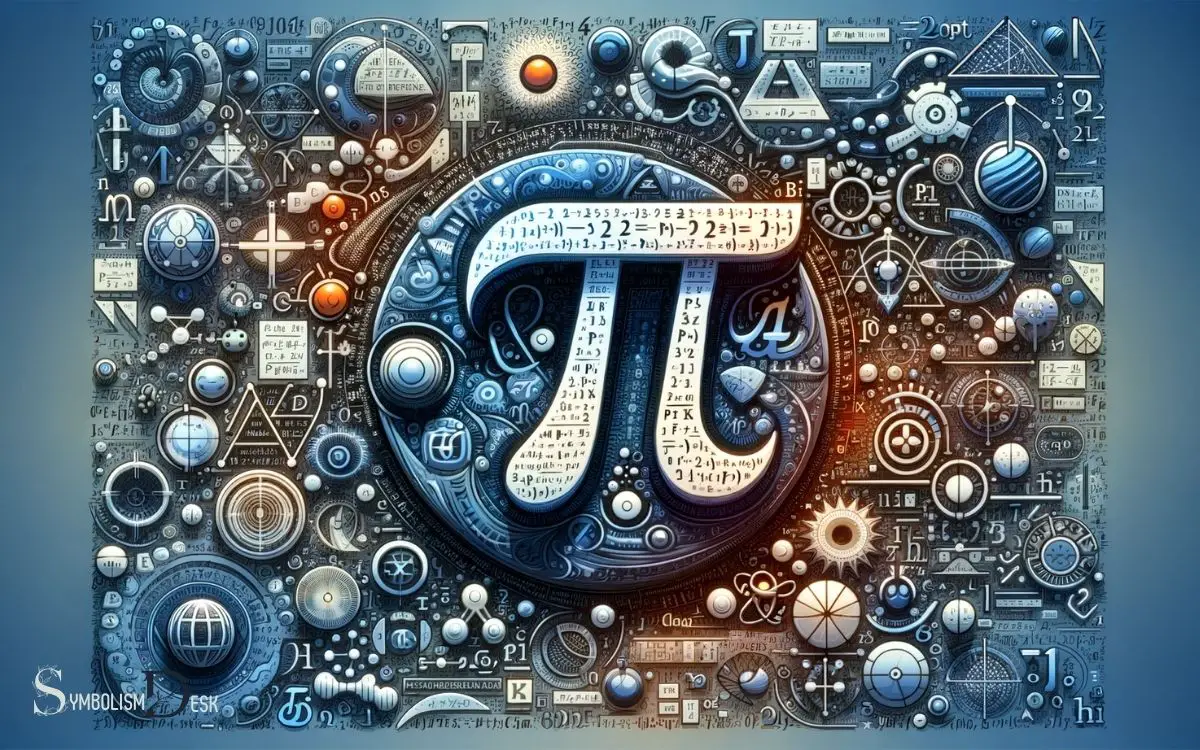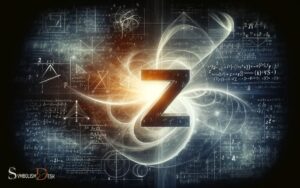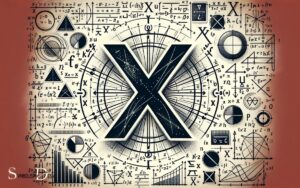Or and Symbols in Math: Explain!
In mathematics, the word “or” is used to signify a logical disjunction between two statements. It is part of logical operators and is represented symbolically by the inclusive “∨” or the exclusive “⊕”.
The inclusive “or” means that at least one of the statements must be true, while the exclusive “or,” often used in probability and set theory, means that exactly one of the statements must be true but not both.
The concept of “or” in mathematics allows for the construction of compound statements where multiple conditions can satisfy the overall expression.
For example, in set theory, the union of two sets A and B, denoted as A ∪ B, contains all elements that are in A, in B, or in both.
In logical statements or propositions, “P or Q” (P ∨ Q) is true if either P is true, Q is true, or both are true. In contrast, for the exclusive “or,” denoted as P ⊕ Q, the statement is true only if one is true and the other is false.
Understanding the distinction between inclusive and exclusive “or” is vital for solving mathematical problems accurately, especially in logic and set theory.

Key Takeaway
Logical ‘Or’ in Math
In mathematical logic, the term ‘logical ’or’’ refers to a binary operation that yields true if at least one of the operands is true. This means that in a logical ‘or’ statement, if either or both of the operands are true, the entire statement is true.
For example, in the statement “A or B,” the result is true if A is true, if B is true, or if both A and B are true.
This concept is fundamental in mathematical reasoning and computer science, where it is often represented by the symbol “∨”.
Understanding the logical ‘or’ is crucial for constructing valid logical arguments and evaluating the truth of complex propositions.
Symbols for Inequality
While discussing mathematical relationships, it is essential to understand the symbols denoting inequality. In mathematics, inequality is represented using specific symbols, each with its unique meaning and usage.
Understanding these symbols is crucial for interpreting and solving mathematical expressions accurately.
Here are the key symbols for inequality:
- Greater than: (>)
- Less than: (<)
- Greater than or equal to: (≥)
- Less than or equal to: (≤)
These symbols are used to compare the relative size of two values, indicating whether one value is larger, smaller, or equal to the other.
Mastery of these symbols is fundamental in various mathematical concepts and problem-solving scenarios. Understanding these symbols for inequality sets the stage for discussing set notation and ‘or’.
Set Notation and ’Or
Set notation and the use of ‘or’ in mathematics are essential for understanding the relationships between sets and their elements.
The union symbol plays a crucial role in combining elements from different sets, allowing for the creation of new sets with a unique combination of elements.
By exploring the principles of set notation and ‘or’ in mathematics, we can gain a deeper understanding of how sets are constructed and how their elements can be manipulated.
Or’ in Sets
The use of ‘or’ in set notation allows for the representation of the union of two or more sets.
When using ‘or’ in sets, it is essential to understand its implications and applications, including:
- Union of Sets: ‘Or’ in set notation signifies the combination of all elements from the sets being considered.
- Inclusive Representation: The ‘or’ operator includes elements that are present in at least one of the sets under consideration.
- Versatile Applications: ‘Or’ facilitates the creation of complex sets by combining multiple sets based on certain criteria.
- Symbolic Representation: The symbol ∪ is used to denote the union of sets when ‘or’ is employed in set notation.
Understanding the use of ‘or’ in sets provides a fundamental building block for working with and manipulating sets in mathematical contexts.
Union Symbol Usage
Denoting the combination of elements from multiple sets, the union symbol, represented by ∪, is used in set notation to express the concept of ‘or’ in mathematics.
For two sets A and B, the union of A and B, denoted as A ∪ B, consists of all elements that are in A, in B, or in both. In other words, it represents the amalgamation of all distinct elements from both sets.
When extending this concept to more than two sets, the union continues to encompass all unique elements across the sets involved.
This operation is fundamental in various mathematical areas, including set theory, probability, and logic.
Understanding the union symbol and its application is crucial for effectively working with sets and solving mathematical problems involving multiple sets.
Combining Set Elements
In mathematical notation, the process of combining set elements using set notation and the concept of ‘or’ is fundamental to various mathematical disciplines.
When combining set elements with ‘or’ in set notation, the following key points should be considered:
- Understanding the ‘or’ operator: The ‘or’ operator in set notation indicates that an element belongs to at least one of the sets being combined.
- Inclusive nature of ‘or’: The ‘or’ operator includes all elements that belong to either or both sets being combined.
- Representation in set notation: The ‘or’ operator is represented by the symbol ∪ in set notation.
- Real-world applications: The concept of combining set elements using ‘or’ has practical applications in probability theory, statistics, and decision-making processes.
Or’ in Probability
The concept of ‘or’ in probability involves determining the likelihood of one or more events occurring. This can be applied to various scenarios, such as the probability of rolling a 3 or a 4 on a six-sided die.
Understanding the use of ‘or’ in probability is essential for accurately calculating the likelihood of specific outcomes.
Or’ Probability Definition
The ‘Or’ probability definition is a fundamental concept in probability theory. It refers to the likelihood of either one event or another occurring, or both.
Here are four key points to understand about the ‘Or’ probability definition:
- Mutually Exclusive Events: The ‘Or’ probability applies when events are mutually exclusive, meaning they cannot occur simultaneously.
- Addition Rule: The ‘Or’ probability is often calculated using the addition rule of probability, which states that the probability of either of two mutually exclusive events occurring is the sum of their individual probabilities.
- Inclusive Events: In some cases, the ‘Or’ probability can also include scenarios where both events occur simultaneously.
- Versatile Application: The ‘Or’ probability concept is widely applicable in various real-world scenarios, such as in risk assessment, decision-making, and games of chance.
Or’ in Event
How does the concept of ‘Or’ in probability relate to the calculation of combined event probabilities? In probability, ‘or’ represents the union of events, indicating that at least one of the events occurs.
When calculating combined event probabilities using ‘or’, it is essential to consider the potential overlap between the events.
The probability of event A or B occurring is calculated by adding the individual probabilities of A and B and then subtracting the probability of both A and B occurring to avoid double counting.
This ensures that the combined probability accurately reflects the occurrence of either event A or event B. Understanding the concept of ‘or’ in probability is fundamental for accurately determining the likelihood of combined events.
Or’ in Formulas
Discussing the application of ‘or’ within formulas involves understanding its role in calculating the combined probabilities of related events.
When dealing with ‘or’ in probability formulas, it’s crucial to consider the following:
- Inclusive Events: The ‘or’ in formulas allows for the occurrence of one event, the other, or both.
- Mutual Exclusivity: Some formulas require mutually exclusive events, where the occurrence of one event excludes the possibility of the other.
- Addition Rule: The addition rule for ‘or’ in probability provides a straightforward way to calculate the probability of either of two events happening.
- Overlapping Events: Calculating the probability of ‘or’ in formulas involves adjusting for any overlap between the events being considered.
Understanding the nuances of ‘or’ within formulas is essential for accurately calculating probabilities in various scenarios.
Using ‘Or’ in Equations
Utilize the quantifier ‘or’ to indicate that one or both conditions in an equation can be satisfied. When using ‘or’ in equations, it implies that at least one of the conditions must be true, or both conditions can be satisfied.
For instance, in the equation x > 5 or x < -3, the solution includes all real numbers greater than 5, all real numbers less than -3, or both. It is crucial to understand that the ‘or’ statement allows for flexibility in satisfying the equation.
When solving equations with the ‘or’ condition, each possibility should be considered separately, and the final solution should encompass all the valid conditions. This approach ensures a comprehensive understanding of the equation and its solutions.
Or’ in Number Theory
In number theory, the use of the quantifier ‘or’ allows for the consideration of multiple conditions, providing a flexible approach to solving equations and identifying valid solutions.
This concept is fundamental in number theory and has several implications:
- Prime Factorization: ‘Or’ is used to express the prime factorization of a number, where a number can be expressed as the product of prime numbers in multiple ways.
- Divisibility Rules: ‘Or’ is utilized in expressing divisibility rules, such as stating that a number is divisible by 2 or 3, allowing for the consideration of multiple divisors.
- Congruence Relations: ‘Or’ is employed in congruence relations to express that a number is congruent to one value or another, providing flexibility in mathematical statements.
- Diophantine Equations: ‘Or’ is crucial in solving Diophantine equations, where multiple conditions need to be considered for finding integer solutions.
Understanding the use of ‘or’ in number theory is essential for navigating through complex mathematical problems.
Conclusion
The use of logical ‘or’ and symbols in math allows for precise and concise communication of mathematical concepts.
Whether indicating inequality, set notation, probability, equations, or number theory, the use of ‘or’ and symbols provides clarity and organization in mathematical reasoning.
Like pieces of a puzzle fitting together, these symbols create a cohesive and comprehensive understanding of mathematical relationships.






